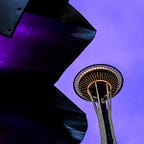The fundamentals of design are the basis of every visual medium from fine art to modern web design. Even small details, like the fonts that make up most compositions. Some very basic elements including line, shape, form texture and balance may not seem like much on their own, but together they’re part of almost everything we see.
Let’s start at the beginning with one of the most basic elements of all the line. A line is a shape that connects two or more points. It can be fat or thin wavy or jagged every possibility gives the line a slightly different feel. Lines appear frequently in design, for example in drawings and illustrations and graphic elements like textures and patterns. They’re also common in text compositions, where they can add emphasis, divide or organize content, or even guide the viewers eye. When working with lines, pay attention to things like weight, color, texture, and style. The subtle qualities can have a big impact on the way your design is perceived look for places where lines are hiding in plain sight, for example in text.
A shape is any two dimensional area with a recognizable boundary. This includes circles, squares triangles, and so on. Shapes fall into two distinct categories geometric or regular and organic, where the shapes are more freeform shapes are a vital part of communicating ideas visually. They give images heft, and make them recognizable. We understand street signs, symbols, and even abstract art, largely because of shapes shapes have a surprising number of uses in everyday design. They can help you organize or separate content, create simple illustrations, or just add interest to your work. Shapes are important because they’re the foundation of so many things. Learn to look for them and other designs, and soon you’ll start seeing them everywhere.
When a shape becomes 3d, we call it a form. Forms can be three dimensional and exist in the real world, or they can be implied using techniques like light shadow and perspective to create the illusion of depth in two dimensional design form makes realism possible. Without it, a bouncing rubber ball is just a circle, a 3d building is just a series of rectangles. Even flat designs use subtle techniques to hint at form and depth. For example, a simple shadow can create the illusion of layers, or give an object a sense of place, basic forms can bring a touch of realism to your work, a powerful tool when used in moderation.
Texture is the physical quality of a surface, it can be three dimensional, something you can see and touch, or it can be implied, suggesting that it would have texture, if it existed in real life in design. Texture adds depth and tactility to otherwise flat images objects can appear smooth rough hard or soft, depending on the elements at play. Look closely, and you may find texture in unexpected places like distressed fonts and smooth glossy icons. Too much texture in a single design can quickly become overwhelming.
Balance is the equal distribution of visual weight. In other words, how much any one thing attracts the viewer design. Balance can be affected by many things, including color, size, number, and negative space. Symmetrical designs are the same or similar on both sides of an access. They feel balanced, because each side is effectively the same if not identical. Asymmetrical designs are different, but the weight is still evenly distributed.
When the composition is balanced, it calls attention to the right things. Many people use a strategy called the rule of thirds. This imagines your work area is divided into a three by three grid. The focal point of the image is placed on or near one of these lines, creating visual balance with the rest of the space. We find this type of composition appealing because according to studies, the human eye naturally follows this path, when scanning a design.
The fundamentals of design, are all about the bigger picture. In other words, learning to appreciate the many small details that make up every composition. This insight can be applied to almost any type of project. Whether you’re creating your own graphics, or just looking for simple ways to enhance your work.
